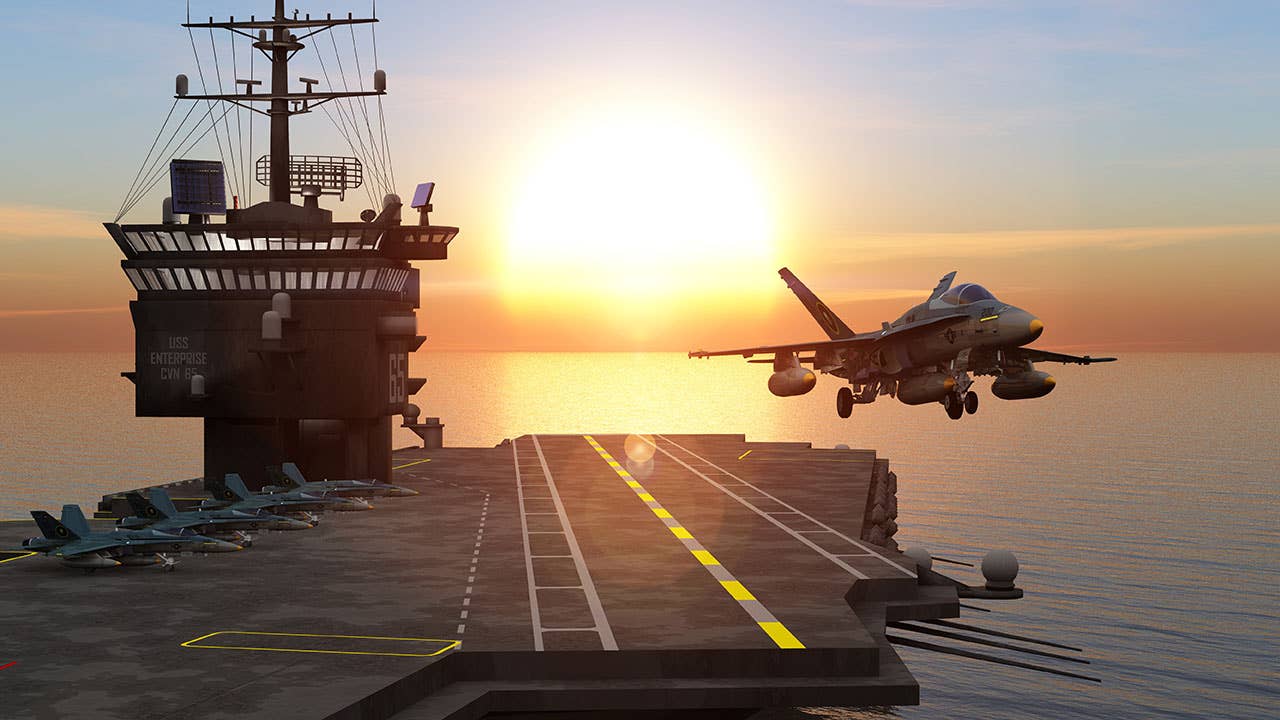Plane Facts: Aircraft Carriers
These huge warships, which do just what the name says they do, can travel around the world’s oceans, bringing with them the power of squadrons of frontline military craft and the support systems they require.

Aircraft carriers have been carrying out critical military operations across the world since the 1800s---that's not a typo. Even before the advent of the airplane, it was clear that transporting aircraft of some kind might provide a wartime advantage, so in the early days, lighter-than-air-craft fit the bill.
Today's modern aircraft carriers are large, nuclear-powered warships, considered the centerpiece of any global power's navy. The United States' carriers are designed to store and launch dozens of fixed- and rotary-wing aircraft in support of national security. Military jets are propelled from the ships using an impressive catapult system, which can zip the aircraft from zero to hundreds of miles per hour in a matter of seconds.
Designed to last a good five decades and only requiring a handful of refuelings in their lifetime, aircraft carriers provide the longest and most reliable service of any military vessel. Crews aboard these ships generally number in the thousands, and their jobs are among the most dangerous in the world. Perhaps that's one of the reasons these ships are equipped with full onboard hospital facilities.
Total Active Aircraft Carriers Worldwide: 45
Currently In Service In The U.S.: 11
Top Speed: >30 knots (35+ mph)
Powered By: Nuclear energy
Refueling Requirements: Once every 20 years
Lifespan: 50 years
Oldest In Service: USS Nimitz
Built: 1968
Commissioned By The U.S. Navy: 1975
Planned Decommission: 2025
Crew Size Of Nimitz-Class Carriers: 6,012
Capacity: ~80 fighter jets
How Aircraft Are Launched: Catapults
Throttle Power Required Prior To Catapult Release: Full
Brakes Held: No
Cue That Pilot Is Ready To Launch: Salute to catapult operator
Aircraft Acceleration At Launch: Zero to 150 knots in 2 seconds
Time Until Next Aircraft Can Launch: 20 seconds
Distance Between Flight Deck And Water Surface: ~280 feet
How Landing Aircraft Avoid Ending Up In Water: Tailhook snags arresting wire stretched across deck
Danger Level Of Flight Deck Jobs: High
Fatalities Since 1980: 38
Gravely Injured: 9
Largest Aircraft To Land On A Carrier: C-130 Hercules
Takeoff Distance It Required: 745 feet
Landing: 460 feet
Catapult Or Tailhook Used: No
Highest Takeoff Weight Accomplished: 121,000 pounds
World's Newest And Largest Aircraft Carrier: USS Gerald R. Ford
Commissioned: 2017
Length: 1,106 feet
Decks: 25
Construction Cost: $12.8 billion
Amount Over Budget: 22%
Crew Size: 5,500
Aircraft Capacity: 90
Estimated Increase In Launching Capacity: 25%
Christened By: Susan Ford Bales, President Ford's daughter
Cool Feature: Welded-in time capsule
Capsule Contents: Sandstone from the White House, Navy coins, Aviator Wings of first commanding officer
Medical Facilities: Hospital, pharmacy, laboratory
Hospital Beds: 46
Cost To Dismantle Retired Aircraft Carriers: $25-$50 million/vessel
New Carriers Currently Under Construction: 2

Subscribe to Our Newsletter
Get the latest Plane & Pilot Magazine stories delivered directly to your inbox






